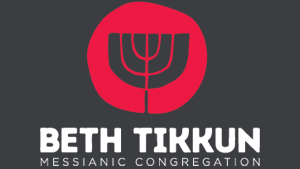Metzora 2018-19
The backdrop for this year’s portion Metzora teaching aligns with the two traditional teaching emphases for the first weeks of the Counting of the Omer: 1) chesed/lovingkindness and 2) gevurah/restriction. Thus, we focus on gracious lovingkindness as we examine the restoration of the “leper,” and we take heed of the necessity for rigorous limitation as we study the “zav.”
Visuals: Metzora 2018-19.pdf
Medios Visuales: Metzorá 2018-19.pdf
Podcast: Play in new window | Download
Subscribe: Google Podcasts | Stitcher | TuneIn | RSS



8 Comments
by donna jeffries
On April 21, 2019
what bibles do you use?
by L. Grant Luton
On April 22, 2019
For general purposes, I use the New American Standard Bible. For the Torah, I generally use The Stone Chumash (available from Artscroll Publishers). However, with whichever translation I may be working from, I always check out the Hebrew and Greek to try to fine tune the translation as best I can. This is especially true of the Hebrew sense it is so multi-faceted. I also highly recommend the translations available from The Concordant Publishing Concern. (www.concordant.org)
by donna jeffries
On April 21, 2019
is baking soda considered a leaven?
by L. Grant Luton
On April 22, 2019
Donna, In my book only yeast is truly chametz. Since yeast was the leavening agent at the time the commandments were given, and since it aligns with Yeshua’s teachings concerning leaven and sin, this is the only learning agent that I believe the Torah has in mind. However, others will strongly disagree, so you must make up your own mind. But, if you begin to expand the definition of chametz to indulge baking soda, rice, corn, etc., etc., then where do you stop? I think common sense must be brought to bear on the question. Hope this helps! Grant
by donna jeffries
On April 22, 2019
thank you. will talk again if ok with you.
by James Fincham
On April 27, 2019
Hi Grant; In my experience, leaven is basically bacteria. There are a huge variety of bacteria and there function is to attack and digest organic matter. the same bacteria that will digest you and I when we are no longer aerobically viable, are the same bacteria that we mix into our bread dough that then begins to digest the Organic Matter within. This digestion releases CO2 which in turn causes a swelling within the dough. This swelling can be termed a chamber. when the bread is baked, the bacteria are killed with the result that a “chamber of death” is produced. As I examine the Hebrew of “leaven” I find that the Chamber of Death is “leaven”, not the bacteria. From a logical perspective, we will never ever rid our selves from the bacteria. They are everywhere, all we can do is throw out the substances that have had a “chamber of death” produced within it. The “leaven” refered to in Lev 23:6, “Leavened bread” cannot be anything other than bread with chambers of death, since the “leaven” in this instance is an adjective, not a noun. So there!!! Hope you have a wonderful Shabbat. You are a new find for me and so far I like the way you think. Jim
by L. Grant Luton
On May 3, 2019
Jim, Thank you for your fascinating insights concerning leaven. I’m not sure that I competed understand what you are stating … (leaven is bacteria?!) … but that could simply be due to my own shortcomings. However, in Lev.23:6 the word “leaven” does not appear. Are you sure you have the correct reference? Shalom,
Grant
by Janet
On April 27, 2019
Wonderful teaching thanks.